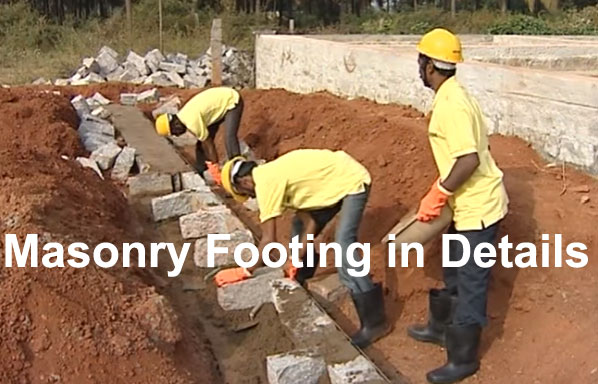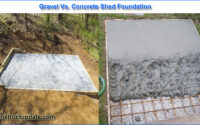Process Stone Masonry Footing in Details
A Stone Masonry Footing is a Structural foundation for walls. The Purpose of a Masonry foundation is to support the weight of the Structure and transfer the load safely to the Ground without sinking or settlement. Before building Stone Masonry Footing trenches to a depth of about 1 to 1.5m a dug and a soil is rammed well, then a layer of plain cement concrete made of one of part of cement, four parts of sand and eight parts of coarse aggregates i.e. 40 mm is laid to a thickness of 100 to 150 mm. The Projection of the bed concrete form the lowest course of Masonry is usually 150 mm. The footing is built over this belt. The foundation is built in courses in a stepped manner.
All stones shall be wetted before use. Each Stone shall be placed close to stones previously layed on 1: 6 Cement Mortar. The Joint Thickness shall not more than 20 mm. Faced Stones shall be arranged suitably to stagger the vertically joints and long vertical joints shall be avoided. Bond or through stones running right through the thickness of walls shall be provided at a regular interval. Wider wall foundations wall may require a set of two or more bond stones over lapping each other. Stones for harding or interior filling shall be put into the position as close as possible and ensure that those are firmly embedded in the mortar. No hollow space shall be left anywhere in the masonry. Ensure that no water is pore in the joint to facilitate easy packing.
Stone Masonry Footing Summary:
Stones used for Masonry should be strong, hard, tough and free from cracks and cavities.
Provide a Plain Cement Concrete bed of 100 to 150 mm thick. Width of the PCC bed shall be 300 mm more than the bottom most course of the foundation.
Use Bond stones at regular intervals of 1 Metre. They should be laid staggered in successive courses.
Hearting stones should be packed as closely as possible and firmly embedded in mortar





